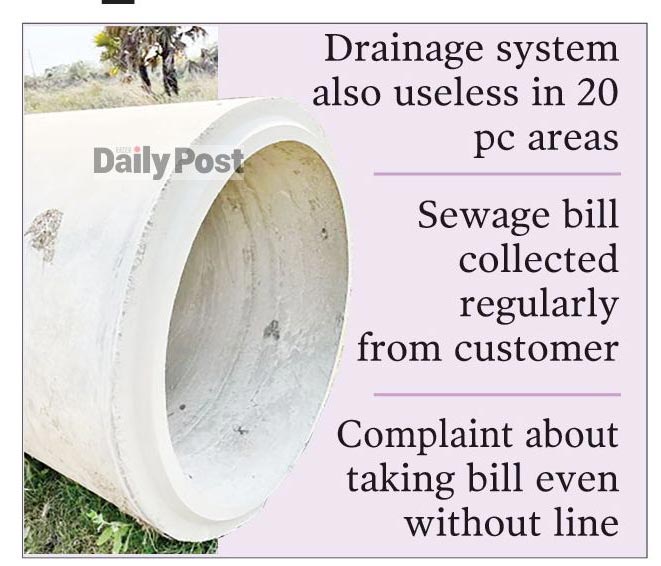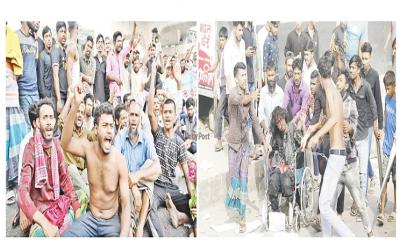# Drainage system also useless in 20 pc areas
#Sewage bill collected regularly from customer
#Complaint about taking bill even without line
In addition to water supply in the capital, Dhaka WASA is also responsible for providing sewerage services. However, more than 80 percent of the capital's areas do not have sewage disposal system.
Most of the 20 percent of the area that has water drainage systems on paper is now useless. As a result, most of the sewage ends up in canals and rivers in one way or another. But Dhaka WASA is collecting sewage bill from the customers. According to WASA officials and engineers, WASA has collected about Tk 3 thousand crores in this sector in the last 15 years since 2009.
On investigation, it is known that the existing sewage system of Wasa has completely collapsed due to lack of any kind of renovation work. Dhaka WASA has mentioned the ineffectiveness of the sewage system in its master plan. In 2013, Dhaka WASA prepared a master plan for sewage disposal. It is said that the main pipeline for transporting sewage is known as 'Trunk Sewers'. Dhaka Wasa has three trunk sewers. Most of these lines are no longer operational.
Analyzing the income of the last six years, it can be seen that Dhaka WASA has earned more than Tk 1,700 crore from sewerage. Out of this, the company earned Tk 238 crore 25 lakh in 2016, Tk 276 crore 79 lakh in 2017, Tk 118 crore 72 lakh in 2018, Tk 333 crore 35 lakh in 2019, Tk 341 crore 79 lakh in 2020 and Tk 391 crore 42 lakh in 2021.
Talking to WASA officials, it is known that there are more than 3,500 kilometers of water supply lines in the Dhaka metropolitan area. However, only 930 km area has sewage lines.
According to their information, sewage drains were constructed in some areas of the metropolis before and after independence. After that, some canals were constructed separately, but the sewage system was not developed as the city expanded. As a result, the sewage of various houses is mixed directly in canals, drains and lakes. Water and environment are being polluted.
WASA officials said, Dhaka WASA currently has 10 regions. Only two of these areas have sewerage lines. The remaining four regions have partial sewerage lines. However, due to the lack of development work on these sewage lines for a long time, they are on the way to failure. Various internal WASA documents also mention these lines being broken. They say, currently there are no sewage lines in four areas of WASA. These four regions are Greater Uttara, Greater Mirpur (Zones 4 and 10) and Baridhara and surrounding areas (Zone-8). There are partial sewerage lines in Lalmatia, Mohammadpur and surrounding areas (Zone-3), Gulshan, Tejgaon and surrounding areas (Zone-5), Jurain-Jatrabari and surrounding areas (Zone-7) and Motijheel-Khilgaon and surrounding areas (Zone-6). However, Dhaka WASA is collecting sewage bills against almost every building in these areas. Even with the increase in the price of water, the sewerage bill has also been increased year by year by the company.
From the water bill of a house in Dhanmondi, it can be seen that the water bill was Tk 5 thousand 43 last September. Along with the water bill, the sewage bill is estimated to be Tk5043. The owner of the house complained, why do we have to pay the same amount of bill even if there is no sewage line. Most of the lines are useless. However, WASA has increased this bill every year. And we are paying this bill every month.
In this regard, Uttam Kumar Roy, the commercial manager of Dhaka Wasa, said about the bill collection, "There are sewerage lines in some areas in some areas, and the bill is being collected accordingly." However, most of the areas do not have sewage lines. Many of our projects have been taken up with this. Some works are closed now, hopefully this problem will be solved when the works are completed.
ZH






